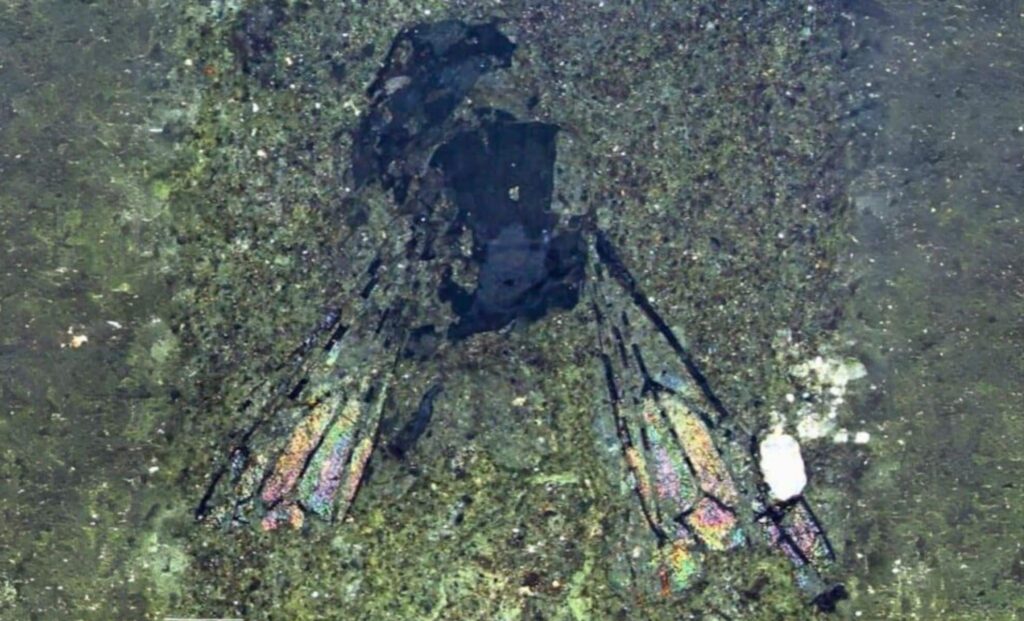Deep in the fossil-rich hills near Outram on New Zealand’s South Island, paleontologists have uncovered something entirely unexpected: the remains of a tiny bee, preserved in volcanic mudstone for 14.6 million years. Measuring just over six millimeters in length, the fossil is the first of its kind found in Zealandia, the mostly submerged continent that includes New Zealand and its surrounding geological plate.
The discovery, published in Zoosystema, was made at the Hindon Maar site, a Miocene-aged volcanic crater lake in Otago known for its exceptional preservation of ancient flora and fauna. What makes this bee significant is not only its age but what it reveals — or fails to reveal — about the history of pollinators in this isolated part of the world.
A Fossil That Doesn’t Fit the Timeline
The fossilized bee, named Leioproctus (Otagocolletes) barrydonovani, belongs to the same genus as several species still found in New Zealand today. According to Dr. Michael S. Engel of the American Museum of Natural History and Dr. Uwe Kaulfuss of the University of Göttingen, its wing vein patterns closely resemble those of three modern subgenera of Leioproctus currently native to the region.
But despite the long evolutionary timescale between the Miocene epoch and the present, only 18 species of Leioproctus are endemic to New Zealand. “If the genus had invaded New Zealand before 14.6 million years ago,” the researchers note, “then it should have been sufficient time for the group to have more extensively diversified or to develop floral specializations with the endemic flora.”
That lack of diversification has sparked a series of questions. One theory suggests that modern New Zealand species are not direct descendants of the fossil at all, but rather stem from later, separate invasions of the islands. Another possibility is that earlier diversification did occur but was “winnowed considerably through extinction,” a process whose causes remain unknown.
Layers of Mystery Beneath the Mudstone
The bee fossil was recovered as a compressed, articulated specimen in dark gray organic mudstone. It is preserved as both part and counterpart, offering a nearly complete dorsal view of the insect’s body. The site’s exceptional preservation has already yielded other insect fossils, but this is the first bee to emerge from its layers.

No pollen was found attached to the fossil, leaving the bee’s ecological role unclear. Still, clues about its environment linger in the surrounding deposits. Among the 48 fossilized flowers recovered at the site, nearly all belong to the Araliaceae family, specifically to an undescribed species of Pseudopanax. These flowering trees and shrubs remain widespread in New Zealand today.
The researchers suggest the fossil bee “might indicate that this Miocene bee species visited Pseudopanax sp., probably among other plants,” although this remains speculative. At least one modern species, Leioproctus pango, is known to collect pollen from Pseudopanax flowers, providing a tenuous link between ancient and extant plant-pollinator relationships.
A Rare Glimpse Into Zealandia’s Biota
The fossil represents a rare insight into the biota of Zealandia, a continent that began separating from the supercontinent Gondwana roughly 80 million years ago. As the researchers describe, “The biota of New Zealand is a mosaic of ancient lineages interspersed among arrays of relative newcomers.”
The island’s insect diversity is often marked by such contradictions. While some lineages have evolved in isolation and developed unique traits, others — like specialized insect pollinators — are notably sparse. Bees, despite their critical role as pollinators worldwide, are comparatively rare in New Zealand. Of the 42 known species, only 28 are endemic.
With little fossil evidence to anchor their timeline, researchers have struggled to determine how long bees have been part of New Zealand’s ecosystems. The discovery of Leioproctus barrydonovani offers the first definitive proof that they were present during the Middle Miocene, but it raises more questions than it answers.
A Puzzle With No Clear Lineage
Adding to the complexity is the uncertainty around the evolutionary relationship between the fossil bee and its modern counterparts. “There are currently no data to indicate that the three groups of Leioproctus in New Zealand form a monophyletic group,” the scientists write, meaning that the bees could represent multiple, younger invasions rather than a single lineage descending from the Miocene ancestor.
If the fossil bee does represent an early arrival, researchers would expect to find more evidence of speciation, particularly in a landscape as varied as New Zealand’s. Its absence points either to evolutionary stagnation or to significant ecological pressures that limited the bee’s development and survival.
With the Hindon Maar and nearby Foulden Maar fossil sites continuing to yield detailed glimpses into ancient ecosystems, paleontologists remain hopeful. As Engel and Kaulfuss note, “The potential to recover in situ pollen is great should additional and more complete bees be uncovered in future excavations.”

